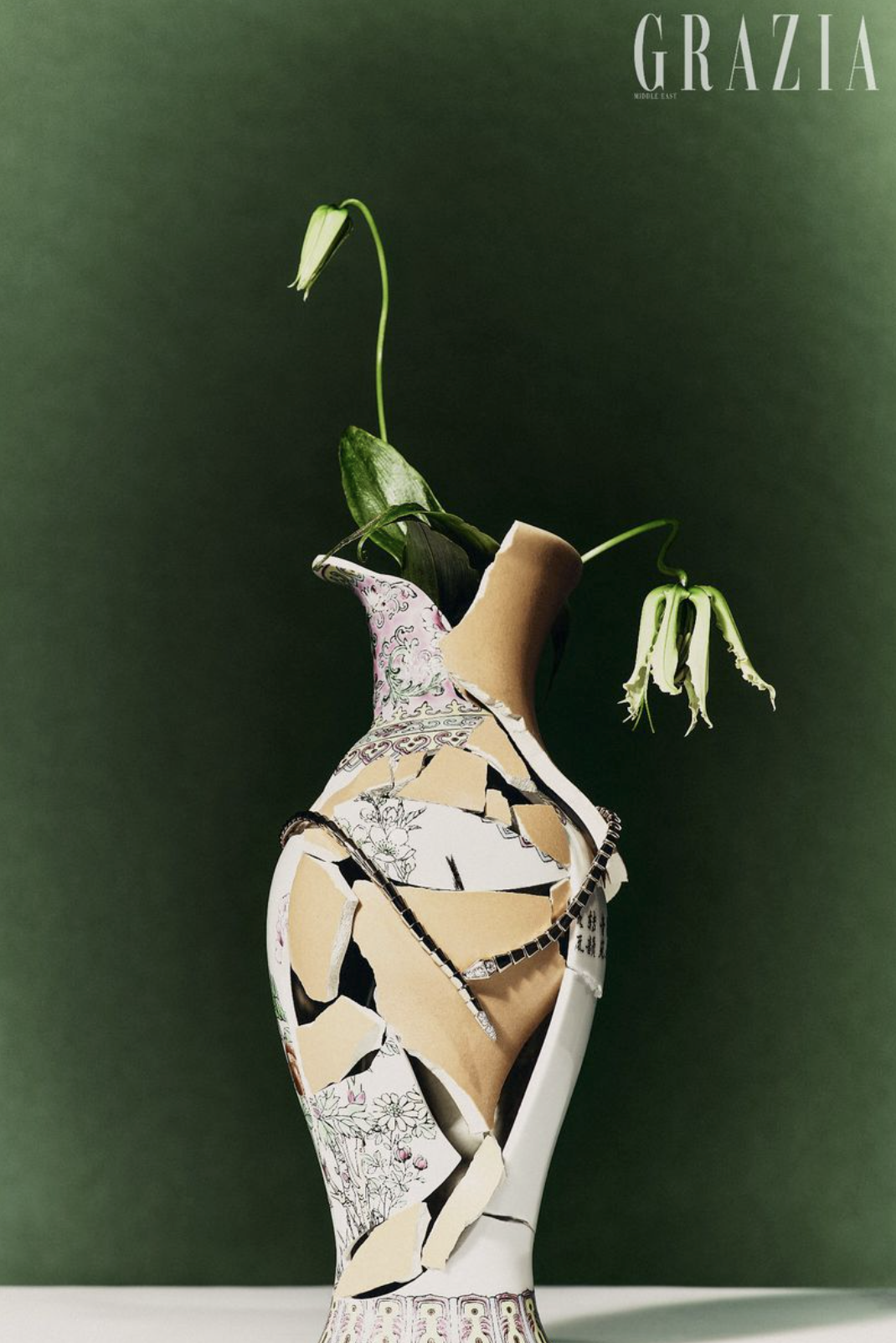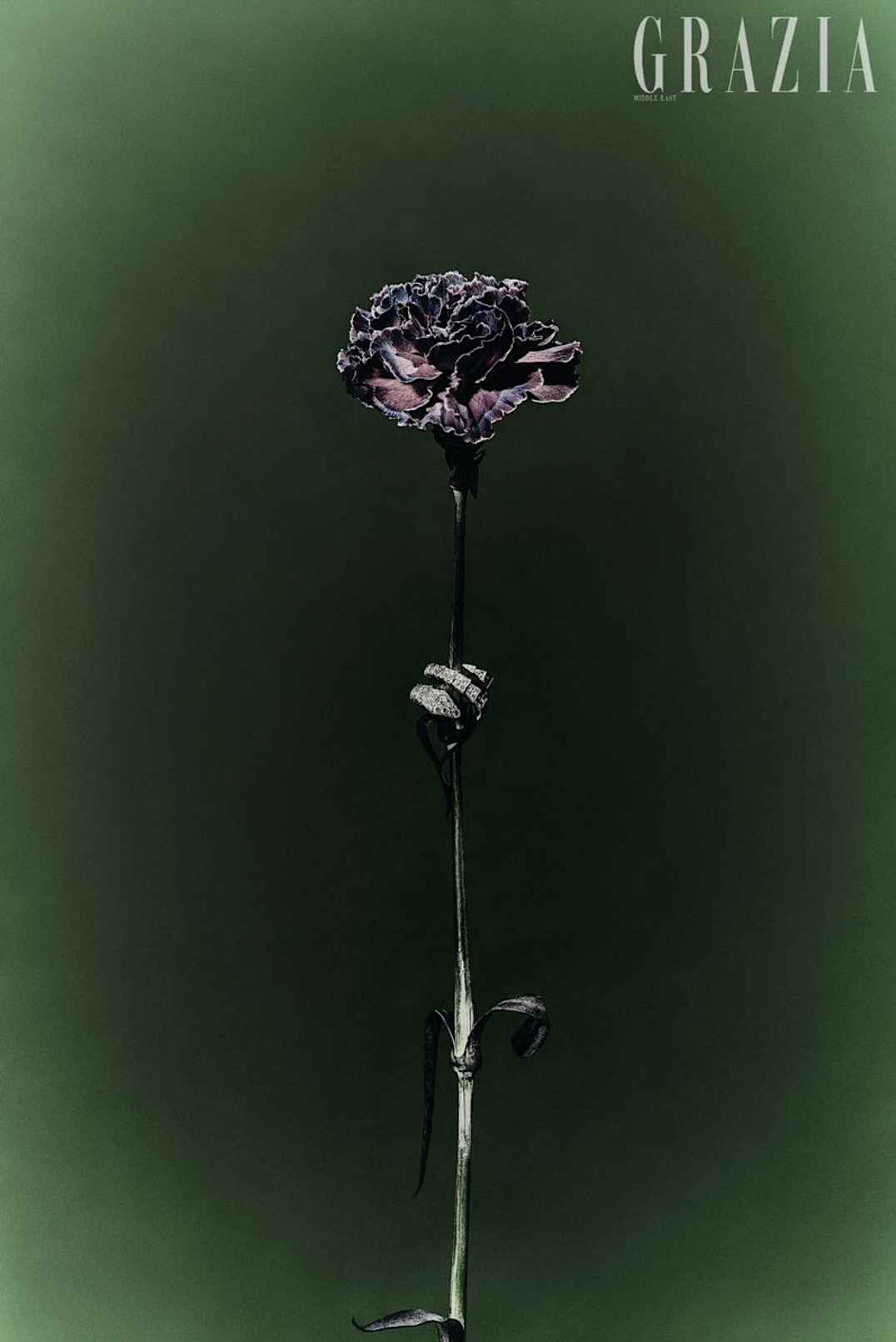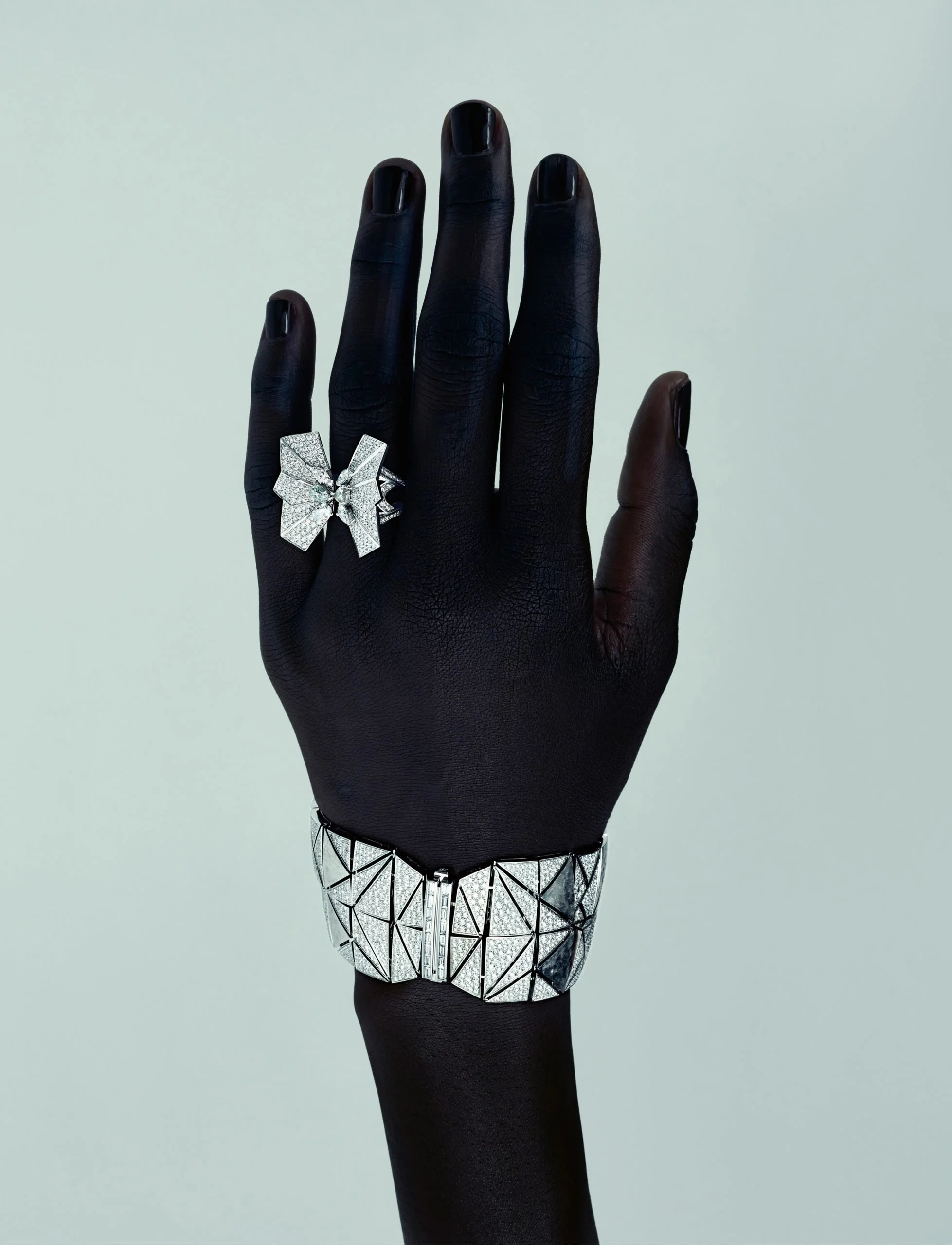Liza Ostanina Wears 'Bulgari Serpenti Collection Jewelry in Grazia International January 2024
/During the Dolce Vita years of the 1950’s and 60’s, Bulgari [IG] became the jeweler to the stars thanks to the American film industry which started to produce movies and extravagant epics in Rome, then dubbed ‘Hollywood on the Tiber’.
Legendary movies like ‘Roman Holidays’ or ‘La Dolce Vita’ made the Eternal City a magical place to visit at least once in your life.
In these images for a fashion story ‘If It Ain’t Baroque’ — which sounds quite pedestrian for such a beautiful collection of images, model Liza Ostanina is styled by Anna Castan for Grazia International’s [IG] January 2024 issue. The photographer is not credited anywhere, but we will continue looking. Hair by Jean-Luc Amarin; makeup by Mabs Khakwani; producer Jean-Marc Mondelet
Bulgari’s Serpenti Collections
Bulgari’s Serpenti motif celebrated its 75th anniversary in 2023. The motif has flourished for decades as a recurring symbol of metamorphosis, in the Roman jewelry brand acquired by LVMH in 2011.
The sinuous form of the serpent lends itself well to jewelry design, allowing Bulgari to create pieces that are both visually striking and highly wearable.
The Serpenti collections exist as a bold and unapologetic embrace of one of human history’s truly ‘forbidden’ philosophical and mythological symbols.
Wearing this particular high jewelry collection places Bulgari women in a high-priestess position, as members of important traditions and rituals in human history that predated monotheism.
Women and Snakes: Is the Ancient Relationship Telepathic?
The very lineage of these women underscores Bulgari's creativity, daring, and willingness to push the boundaries of conventional design. The concept of metamorphosis fundamental is deeply embedded in the Serpenti collections.
The association between women and snakes frequently represented complex ideas related to fertility, temptation, acquiring knowledge and power. Fundamentally. snakes are probably the most potent symbol regarding the duality of nature and its impact on humanity at large. And it’s a fact that the natural alliance between women and snakes is more relevant than with men.
Anne pressed Lulu, our AI researcher on modern culture’s more debased theories around women and snakes as phallic symbols.
Within the historical realm of her focus, Lulu didn’t cede any ground to Anne’s multiple queries seeking to disprove her own theories around the elevated relationship with women and snakes in the ancient world.
Women had more power and influence in those societies — although they were losing it rapidly by 500-200 BC in Greece.
The Serpent in Ancient Societies
The serpent holds a prominent place in ancient mythology, often representing dualities such as life and death, creation and destruction. In Egyptian mythology, the ouroboros – a snake devouring its own tail – symbolized eternal cycles of life and rebirth. The serpent symbolized royalty, deity, and protection, often depicted on crowns and bracelets worn by pharaohs and queens in ancient Egypt.
In some ancient cultures, snakes were associated with oracles and prophecy, leading to a perception of ambiguity and uncertainty. In early ancient cultures, women were as likely as men to be associated with oracles. The prevailing belief is that originally, women were more likely than men to occupy these positions of influence and power.
Similarly, in Greek mythology, serpents were associated with healing and medicine due to their ability to shed their skin. This transformative aspect resonated deeply with civilizations seeking spiritual enlightenment, as well as physical healing.
In ancient Greece, the serpent was linked to Asclepius, the god of medicine and healing, and was a popular motif in jewelry, especially in the form of bracelets and armbands. The Romans also adopted the serpent motif in their jewelry, often wearing serpent-shaped bracelets as amulets, believed to provide protection and ward off evil.
In Hinduism, snakes represent divine energy known as Kundalini Shakti. The coiled serpent at the base of the spine is believed to be an untapped source of spiritual power that can be awakened through meditation and yoga practices.
In Mesoamerican civilizations such as the Aztec and Mayan cultures, the serpent held great symbolic importance, representing fertility, rebirth, and the cycle of life and death. Serpent motifs were frequently incorporated into jewelry designs, including intricately crafted serpentine necklaces and bracelets.
In African and Native American cultures, snakes were often seen as duplicitous and untrustworthy creatures. Further study is warranted, when serpents enjoy such an illustrious background in most cultures. AOC stresses, though, that duality and nuance — the sands shifting beneath our human feet — is a core concept in the symbolism of serpents. Philosophically, it’s regarded as an accurate representation of our perceived human reality.
The Story of Eve
In Western culture, serpents have often been seen as both alluring and dangerous creatures. The biblical story of Adam and Eve portrays a serpent tempting Eve with forbidden knowledge in the Garden of Eden. This narrative intertwines themes of temptation, wisdom-seeking, and punishment for disobedience in pursuing that knowledge.
Eve's interaction with the serpent in the biblical story of Adam and Eve — she ate the forbidden apple — has been interpreted as a narrative that symbolizes the loss of innocence that accompanies the acquisition of knowledge and the complexities of human nature in the entire plane of human existance.
To state the obvious, different sects of Christianity interpret the story of Eve and original sin with praise and also contempt.
In Islam, a similar story is presented in the Quran, where Adam and his wife, known as Hawwa (Eve), are similarly tempted by Iblis (Satan) and eat from the forbidden tree.
As a result, they are also expelled from paradise and sent to live on earth. However, in Islam, both Adam and Hawwa share the responsibility for their actions, and there is no hierarchical blame placed on Eve as seen in many interpretations of the Christian tradition.
Returning to Bulgari’s tight embrace of its Serpenti collection, we expect this rich history and mythology to become even more important in future years. We don’t know this moment if the serpent appears in Bulgari’s hotels and spa decor, but the search is on.










































